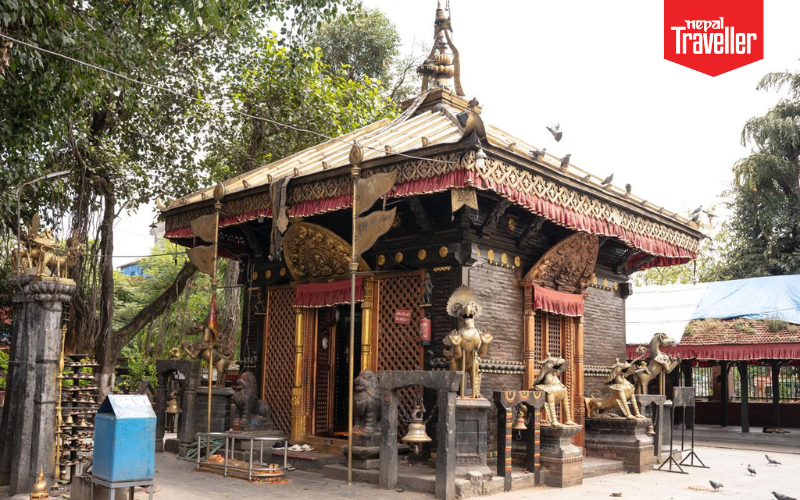Situated in the vibrant heart of Kathmandu, just east of Dillibazar, stands Maitidevi Temple—an enduring symbol of Nepal’s spiritual legacy and architectural brilliance. Though lesser known to international visitors, this temple remains deeply revered by locals and holds a significant place in the city’s religious and cultural landscape.
Historical Beginnings
The roots of Maitidevi Temple reach back to the Lichchhavi era, one of the earliest recorded periods in Nepali history. Historical inscriptions and oral traditions suggest that the temple was originally established in the 7th century AD by Amshu Verma, a powerful Lichchhavi ruler renowned for promoting culture, architecture, and trade.
Later, in the early 20th century, Prime Minister Chandra Shumsher Rana oversaw the reconstruction of the temple in its present form, giving it the classic pagoda structure now visible today. This blend of ancient foundation and Rana-era renovation gives Maitidevi its distinct historical layering.

Goddess of Strength and Devotion
Maitidevi is considered a manifestation of Durga, the fierce and protective mother goddess in Hinduism. Locally, she is also associated with the Astamatrikas—the eight mother goddesses of tantric tradition—and is revered by many under the title ‘Maitiajima’, which translates roughly to “Mother Goddess of Maiti”.
The word maiti in Nepali refers to a woman’s parental home, symbolising security, nurture, and emotional refuge. This symbolism adds a personal layer of meaning for many devotees, particularly women, who visit the temple seeking strength, healing, and blessings for familial well-being.
Where Spirit Meets Structure
Maitidevi Temple is an exquisite example of the traditional pagoda architectural style, characterised by its gracefully tiered roofs, ornate wooden struts carved with deities and mythical creatures, and a prominent metal finial (gajur) atop the roof.
The temple’s structure reflects the exceptional craftsmanship of the Kathmandu Valley. The two stone lions guard the entrance, while intricate bells and ritual elements enhance the sacred atmosphere.
Inside the sanctum lies the main idol of Goddess Maitidevi, a modest stone figure enshrined in silver and adorned with vivid red cloth, vermillion (sindoor), and floral offerings. Above the idol sits a silver canopy etched with nine mother goddesses, symbolising divine feminine power. The temple complex also houses important features such as Mayur Kunda (Peacock Pond), Brahmanala (sacred canal), and an adjacent cremation ground, all reinforcing the site’s spiritual and tantric significance in Nepali Hindu tradition.

Festivals and Ritual Practice
The temple is especially vibrant during Dashain, Nepal’s largest Hindu festival celebrating Durga's triumph over evil. Devotees line up to offer prayers, well wishes and seek blessings from the goddess.
Maitidevi is recognised as a potent Shakti Peeth and is venerated in the context of tantric tradition, often seen as Panchadevi (Pancha Kumari) and aligned with wealth and spiritual potency.
Pilgrims travelling to other sacred sites, particularly Manakamana Temple in Gorkha, often stop first at Maitidevi to pour water as an offering—believed to enhance the efficacy of their prayers.
Myth and Legend
Local legend speaks of a divine peacock, believed to be a manifestation of the goddess herself, that once landed at the site. Wherever it stepped, objects reportedly turned to gold—an omen that marked the land as sacred. This tale not only explains the name of the pond (Mayur Kunda) but reinforces the mystical aura that surrounds the temple.
Today, amidst modern buildings and busy roads, the temple remains a sanctuary—a place where the old gods are still honoured, where rituals continue unbroken, and where the sacred quietly endures in the rhythm of daily life.
Also Read